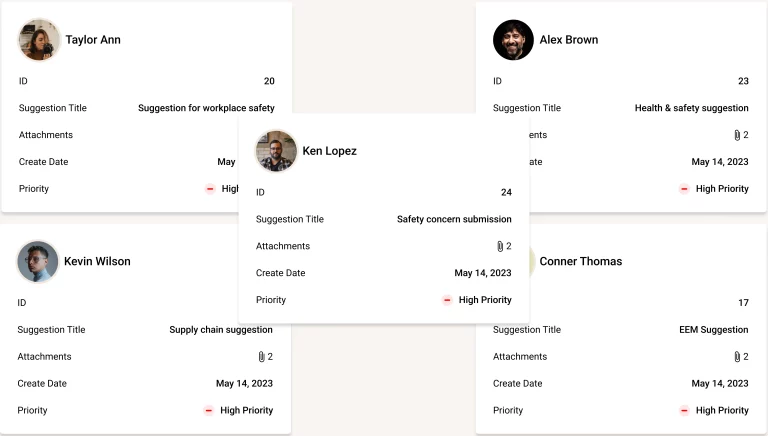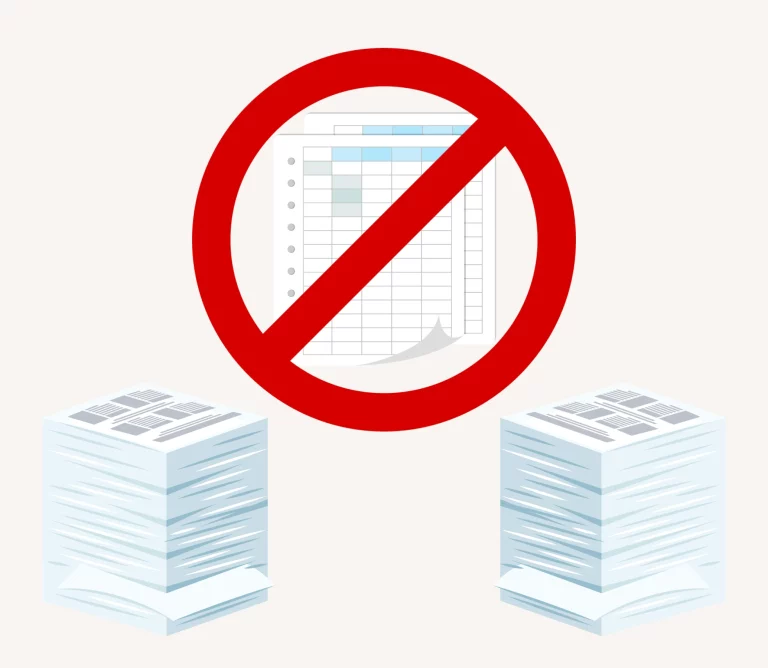Lean Six Sigma has emerged as a powerful methodology to enhance efficiency, reduce waste, and drive continuous improvement within organizations. One of the key elements that make Lean Six Sigma so effective is the wide array of tools and techniques it offers to identify problems, analyze data, and implement solutions. In this blog post, we’ll explore some of the most popular Lean Six Sigma tools and techniques that have been widely adopted across industries to achieve operational excellence and deliver exceptional results.
What is Lean?
Lean manufacturing is a systematic approach to minimizing waste and maximizing productivity in manufacturing processes. It focuses on creating more value for customers with fewer resources by eliminating activities that do not add value to the final product. Lean manufacturing principles originated from the Toyota Production System and have since been adopted by many industries worldwide.
What is Six Sigma?
Six Sigma is a data-driven methodology used by organizations to improve processes and reduce defects. Originating from Motorola in the 1980s and popularized by General Electric, Six Sigma aims to achieve near-perfect quality by minimizing variability and enhancing efficiency. Six Sigma methodologies are widely used across industries to enhance customer satisfaction, increase profitability, and drive continuous improvement.
What is Lean Six Sigma?
Lean and Six Sigma are two powerful methodologies that, when combined, create Lean Six Sigma – a comprehensive approach to process improvement. Lean focuses on eliminating waste and increasing efficiency by streamlining processes, while Six Sigma aims to reduce defects and variations in processes to improve quality and consistency. By integrating the principles of both Lean and Six Sigma, organizations can achieve significant improvements in operational performance, customer satisfaction, and profitability. Lean Six Sigma emphasizes the importance of data-driven decision-making, continuous improvement, and a customer-centric approach, making it a highly effective strategy for organizations looking to optimize their processes and drive sustainable growth.
Key principles of Lean Six Sigma
The Lean Six Sigma principles are widely recognized as a highly effective approach to project management. The methodology is based on five key principles or objectives:

1. Focus on the customer
This first Lean Six Sigma principle emphasizes the importance of understanding and meeting the needs and expectations of the customer in order to deliver high-quality products or services. By prioritizing the customer, organizations can identify areas for improvement, reduce waste, and increase customer satisfaction. In short, this principle involves gathering feedback from customers, analyzing data to identify customer requirements, and continuously striving to enhance the customer experience.
2. Map out the value stream
The second principle involves identifying and visualizing every step in the process that adds value to the end product or service. By mapping out the value stream, teams can gain a clear understanding of how value is created and where there may be inefficiencies or waste in the process. As a result, this enables them to pinpoint specific problems or bottlenecks that impact productivity, quality, or customer satisfaction. The purpose of the value stream map is to streamline processes, eliminate non-value-added activities, and improve overall efficiency.
3. Remove waste to create flow
The third principle emphasizes the importance of eliminating any processes or activities that do not add value to the final product or service. According to the principles of lean methodology, there are seven kinds of waste: transportation, inventory, motion, waiting, overproduction, over processing, and defects. By minimizing waste, organizations can streamline their operations and improve efficiency. What’s more, creating a smooth flow of work ensures that tasks are completed in a timely manner, further reducing lead times and increasing customer satisfaction.
4. Communicate with your team
Communication is essential in Lean Six Sigma, and the fourth principle emphasizes the importance of effective communication within your team. Clear and open communication ensures that everyone is on the same page, working towards the same goals, and can help in identifying and addressing any issues that may arise during the project. By fostering a culture of transparent communication, team members can share ideas, feedback, and concerns. Consequently, this leads to improved collaboration and ultimately better outcomes.
5. Create a culture of change and flexibility
The fifth and final key principle of Lean Six Sigma emphasizes the importance of creating a culture of change and flexibility within an organization. Lean Six Sigma principles involve a significant amount of change in processes and procedures to improve efficiency and reduce waste. So, to successfully implement these principles, it’s crucial to encourage employees to embrace and accept change. This involves fostering a work environment where employees feel empowered to adapt to new ways of working and are open to continuous improvement.
The most popular Lean Six Sigma tools and techniques
Several Lean Six Sigma tools and techniques have emerged as the most popular choices for process improvement. From the versatile DMAIC (Define, Measure, Analyze, Improve, Control) framework to the powerful fishbone diagram (Ishikawa) for root cause analysis, these tools play a crucial role in streamlining operations and enhancing quality. We’ll now dive into the top Lean Six Sigma tools and techniques that can revolutionize your process improvement strategy.

Value stream mapping
Value stream mapping is a powerful tool used in Lean Six Sigma to visualize and analyze the steps involved in delivering a product or service to a customer. It provides a detailed overview of the current state of a process, highlighting areas of waste, inefficiency, and opportunities for improved capabilities within the process. By mapping out every step in the value stream, from raw materials to the finished product reaching the customer, teams can identify bottlenecks, redundancies, and non-value-added activities. As a result, this enables organizations to streamline their processes, reduce lead times, improve quality, and ultimately deliver greater value to customers.
The 5 Whys
The 5 Whys technique is one of the most commonly used Lean Six Sigma tools for problem-solving. It involves asking “why” at least five times to get to the root cause of a particular issue or problem. By repeatedly asking “why,” teams can uncover the underlying reasons behind issues rather than just addressing the symptoms. This method helps in identifying the true cause of a problem, leading to more effective and sustainable solutions. In essence, the 5 Whys technique encourages a deeper level of thinking and analysis. This promotes a culture of continuous improvement within organizations by addressing issues at their core.
Kanban
Kanban is a visual scheduling system used in Lean Six Sigma to improve efficiency and reduce waste in manufacturing processes. Originating from Japan, Kanban means “visual card” or “signal,” and it involves using visual cues like cards or boards to signal the need for production or replenishment of materials. By adopting Kanban, organizations can streamline their supply chain control system (and other workflows), minimize inventory levels, and enhance overall productivity. Basically, this method enables teams to prioritize tasks, identify bottlenecks, and maintain a smooth, continuous workflow. Kanban promotes a pull-based system where work is only pulled through the system when needed, thus reducing overproduction and improving lead times.
Failure Modes and Effects Analysis (FMEA)
Failure Modes and Effects Analysis (FMEA) is an analysis technique used in Lean Six Sigma to proactively identify and address potential failures in a process or product. By systematically analyzing the various failure modes and their potential effects, FMEA helps teams prioritize their efforts towards preventing or mitigating the most critical risks. This structured approach not only improves the overall quality and reliability of a system, but also reduces costs associated with rework, scrap, or customer complaints. FMEA can be applied at different stages of a project or product lifecycle. So, this makes it a versatile tool for continuous improvement and risk management in various industries.
Process mapping
Process mapping is a valuable tool in Lean Six Sigma that helps organizations visualize and understand their business processes. Essentially, it involves creating detailed flowcharts or diagrams that outline each step in a process, from start to finish. This allows for a clear identification of inefficiencies, bottlenecks, and opportunities for improvement. What’s more, this visual representation helps teams identify redundancies, unnecessary steps, or areas where errors commonly occur, enabling them to streamline processes and increase overall efficiency.
5S
5S is one of the most fundamental Lean Six Sigma tools that focuses on organizing the workplace for efficiency and effectiveness. The 5S stands for Sort, Set in Order, Shine, Standardize, and Sustain. Each of these steps plays a crucial role in creating a well-structured and organized work environment. The purpose of implementing 5S is to eliminate waste, reduce errors, and optimize productivity by streamlining processes, improving safety, and promoting a culture of continuous improvement.
Pareto chart
A Pareto chart is a Lean Six Sigma tool used to identify and prioritize the most significant factors contributing to a problem or issue. Named after Vilfredo Pareto, an Italian economist, the chart uses the Pareto principle which states that a majority of problems come from vital few causes. In other words, it follows the 80/20 rule, which suggests that 80% of the effects come from 20% of the causes. By visually displaying data in descending order of frequency or impact, Pareto charts help teams focus their efforts on the vital few rather than the trivial many. This prioritization enables organizations to allocate resources efficiently and effectively to address the root causes of problems, leading to improved processes and outcomes.
Kaizen (continuous improvement)
Kaizen is another fundamental concept in Lean Six Sigma that involves the continuous effort to improve processes, products, or services incrementally. That is to say, the purpose of Kaizen is to create a culture of continuous improvement within an organization, where employees at all levels are encouraged to identify areas for enhancement and implement small, incremental changes to achieve ongoing improvements. By focusing on Kaizen, companies can streamline operations, reduce waste, increase efficiency, and ultimately enhance customer satisfaction. This systematic approach to improvement empowers employees to take ownership of their work and contribute to the overall success of the organization.
DMAIC process
DMAIC, standing for Define, Measure, Analyze, Improve, and Control, is a systematic and data-driven tool in Lean Six Sigma. It has five phases and is used to provide a structured approach for problem-solving and process improvement within organizations:
- 1. The “define” phase involves clearly outlining the problem, project goals, and customer requirements.
- 2. In the “measure” phase, data is collected to establish a baseline performance level.
- 3. The “analyze” phase focuses on identifying root causes of issues through data analysis.
- 4. Improvement actions are then implemented in the “improve” phase to address the root causes and improve processes.
- 5. Finally, the “control” phase ensures that the improvements are sustained over time by implementing controls and monitoring the process.
RACI matrix
The RACI matrix is a Lean Six Sigma tool used to clarify roles and responsibilities within a project or process. RACI stands for Responsible, Accountable, Consulted, and Informed, representing the different levels of involvement individuals can have in a task. By clearly defining who is responsible for completing a task, who is ultimately accountable for its success, who needs to be consulted for input, and who needs to be informed of progress, the RACI matrix helps streamline decision-making processes and enhances communication among team members. In short, this tool is particularly useful in ensuring that everyone understands their role in achieving project goals, reducing confusion, and improving overall efficiency.
Fishbone diagram
The fishbone diagram, also known as the Ishikawa diagram or cause-and-effect diagram, is a Lean Six Sigma tool used for problem-solving and root cause analysis. This diagram takes its name from its appearance, resembling the skeleton of a fish, with the “head” representing the problem or effect, and the “bones” representing the various potential causes contributing to that problem. By visually mapping out these potential causes in categories such as people, process, equipment, materials, and environment, the fishbone diagram helps teams identify the root causes of issues, leading to more targeted and effective solutions. Its purpose is to promote a structured approach to problem-solving, encourage team collaboration, and ultimately drive continuous improvement within an organization.
Regression analysis
Regression analysis is a powerful statistical process control tool used in Lean Six Sigma to understand the relationship between variables and make predictions based on observed data. Its primary purpose is to identify and quantify the relationship between a dependent variable and one or more independent variables. By analyzing data through regression analysis, teams can determine how changes in one variable may impact another, allowing them to make informed decisions to enhance existing processes and reduce variation. This tool helps organizations identify key factors that influence process performance and enables them to optimize operations for better efficiency and quality.
Control charts
A control chart is a Lean Six Sigma tool used to monitor process variation over time. It helps identify any trends, shifts, or patterns in data. This allows teams to distinguish between common cause variation (inherent to the process) and special cause variation (due to external factors). By plotting data points on a control chart to track all improved capabilities, teams can determine if a process is in control or out of control. Consequently, this enables them to take corrective actions promptly, reducing variation, enhancing quality, and increasing efficiency.
How to pick the right Lean Six Sigma tools and techniques
Selecting the right Lean Six Sigma tools is crucial for the successful implementation of process improvement initiatives. To begin, it’s essential to clearly define the problem or opportunity you aim to address. Understanding the nature of the issue will guide you in choosing the most suitable Lean Six Sigma tools for analysis and improvement.
Next, consider the data requirements for the project. Some Lean Six Sigma tools, such as Pareto charts or fishbone diagrams, rely heavily on data analysis, while others, like process mapping or value stream mapping, focus more on visualizing the workflow. Therefore, matching the tools to the data availability and complexity of the problem will ensure effective analysis and decision-making.
Additionally, take into account the expertise and skills of your team members. Different Lean Six Sigma tools require varying levels of statistical knowledge and experience. Hence, it’s important to select tools that align with the capabilities of your team to maximize efficiency and accuracy in the improvement process. By carefully evaluating the problem, data requirements, and team proficiency, you can confidently choose the right Lean Six Sigma tools to drive impactful and sustainable change within your organization.
Lean Six Sigma vs Six Sigma
Lean Six Sigma and Six Sigma are both methodologies that aim to improve processes and eliminate defects within organizations. While they share the common goal of enhancing efficiency and quality, there are some key differences between the two approaches.
Six Sigma focuses primarily on reducing variation and defects in processes by using statistical analysis and data-driven decision-making. It aims to ensure that outputs meet customer requirements and that processes operate as efficiently as possible. On the other hand, Lean Six Sigma combines the principles of the Six Sigma process with those of lean manufacturing, which focuses on minimizing waste and maximizing value. This means that Lean Six Sigma not only targets defects and process variations, but also looks at streamlining processes and eliminating non-value-added activities.
In essence, Six Sigma is more focused on quality and reducing defects, while Lean Six Sigma takes a broader approach by incorporating waste reduction and process optimization. Both methodologies have their strengths and can be effective in different contexts. So, choosing the right one depends on the specific goals and challenges of the organization.
What are the Lean Six Sigma certification levels?

Lean Six Sigma certification levels provide a structured framework for individuals to showcase their expertise and proficiency in process improvement methodologies. These levels signify different levels of knowledge and experience in Lean Six Sigma practices. There are six different certification levels: white belt, yellow belt, green belt, black belt, and master black belt.





